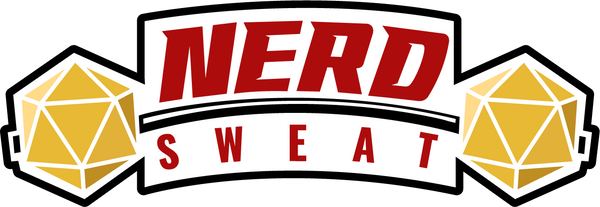
Greyhawk Deities and Divine Influence: Adding Depth to West Marches Adventures
In a West Marches campaign, players drive the story by choosing which quests to pursue and where to explore. But in a world as rich as Greyhawk, adventurers aren’t just at the mercy of their own decisions—they also contend with the influence of powerful deities. The Greyhawk pantheon offers an incredible opportunity to add depth, drama, and dynamic storytelling to a campaign. Whether a character is a devoted cleric, a reluctant champion, or an unwitting pawn of divine forces, the gods of Greyhawk are always watching.
In this post, we’ll explore how divine influence can enhance your West Marches campaign, providing roleplaying depth, plot hooks, and world-building opportunities.
Why Use Deities in a West Marches Campaign?
West Marches campaigns are player-driven, meaning the Dungeon Master (DM) does not guide players toward a set narrative. Instead, adventurers forge their own path through the world. The gods of Greyhawk add an extra layer of intrigue by:
- Offering mysteries, prophecies, and omens that hint at hidden dangers or lost knowledge.
- Introducing divine quests that connect adventurers to the larger world.
- Enabling player-driven faction play with churches, cults, and religious orders.
- Creating moral dilemmas when gods intervene in the mortal world.
Greyhawk’s Divine Landscape: A Quick Overview
The World of Greyhawk features a vast and diverse pantheon of deities, from noble protectors to sinister beings lurking at the edges of reality. Unlike some settings, Greyhawk’s gods are deeply involved in mortal affairs, with cults, clerics, and religious wars shaping history.
Here’s a breakdown of key deities and how they can influence your campaign:
Lawful Good & Neutral Good Gods
- Heironeous (God of Chivalry, Justice, and Honor) – His paladins quest for glory, battling the forces of evil in his name.
- Pelor (God of the Sun and Healing) – A beacon of hope whose followers seek to eliminate darkness and disease.
- Rao (God of Peace and Reason) – Worshippers work to mediate conflicts, but what happens when peace is impossible?
Chaotic & Neutral Deities
- Olidammara (God of Revelry and Rogues) – Tricksters and bards thrive under his teachings, but so do scoundrels and thieves.
- Obad-Hai (God of Nature and the Wild) – Druids invoke his name to protect sacred lands from civilization’s encroachment.
- Istus (Goddess of Fate) – She weaves the threads of destiny, leading some to glory and others to doom.
Evil & Chaotic Gods
- Vecna (God of Secrets and Undeath) – His cultists seek forgotten knowledge, and his relics are powerful yet cursed.
- Erythnul (God of Slaughter) – Where battle rages, his followers revel in bloodshed and destruction.
- Tharizdun (The Chained God) – A terrifying entity whose worshippers plot to free him from his prison and bring about oblivion.
For a full Greyhawk pantheon list, visit Great Library of Greyhawk Wiki or check out the Living Greyhawk Gazetteer.
Bringing Divine Influence Into the Game
1. Divine Omens and Prophecies
Gods in Greyhawk are known to send visions, dreams, and omens to those they favor—or curse. This can be a great way to introduce player-driven plot hooks in a West Marches campaign.
Example:
A group of adventurers receives a vision of a ruined temple where Pelor’s light cannot reach. Do they investigate? And what horrors might lurk in the sunless depths?
2. Religious Factions and Political Play
West Marches campaigns often involve factions, and religious organizations make excellent factions for players to interact with.
Example:
- The Knights of the Holy Shielding (devoted to Heironeous) might hire adventurers to track down a rogue paladin who has fallen to Vecna’s dark whispers.
- A secretive cult of Tharizdun could be manipulating local politics, setting the stage for future conflicts.
Resource: The Living Greyhawk Gazetteer (2000) provides an in-depth look at Greyhawk’s religious factions.
3. Divine Boons and Curses
Deities can reward or punish adventurers based on their actions. This is particularly effective in a West Marches campaign, where different groups of players shape the world.
Examples of Divine Boons:
- A rogue who follows Olidammara might find themselves strangely lucky, gaining advantage on certain rolls.
- A warrior who upholds Heironeous’ code could receive a holy blade—but breaking their vows might cause the weapon to lose its power.
Examples of Divine Curses:
- Those who desecrate a temple of Nerull might begin seeing ghostly figures at night, hinting at their impending doom.
- A warlock who dabbles in Vecna’s magic may find their secrets slipping from their mind, affecting Intelligence-based checks.
4. Sacred & Profane Locations
The West Marches format encourages players to explore uncharted lands—and holy sites can be powerful motivators for adventure.
Examples of Religious Locations in Greyhawk:
- The Temple of Elemental Evil – A once-destroyed, now-rebuilding temple to dark elemental gods.
- The Hidden Shrine of Istus – A sacred place where those who seek answers might learn their fate—for a price.
- The Crypt of Lyzandred the Mad – A tomb belonging to a lich who sought divine secrets.
These locations can serve as major quest hubs, allowing adventurers to seek divine knowledge or cleanse corrupted sites.
Conclusion: Making the Gods Matter
By weaving divine influence into your West Marches campaign, you can create a world that feels alive—one where the gods are more than names in a book. Whether through holy quests, divine omens, or ancient cults, Greyhawk’s deities can be the driving force behind unforgettable adventures.
Resources for DMs & Players:
- Living Greyhawk Gazetteer (2000) – The ultimate sourcebook for Greyhawk’s deities and factions.
- Great Library of Greyhawk – a Wiki for fan-made Greyhawk lore.
- D&D Beyond – For quick deity references and homebrew ideas.
Are the gods influencing your character’s journey? Let us know how divine forces shape your adventures in the comments!
